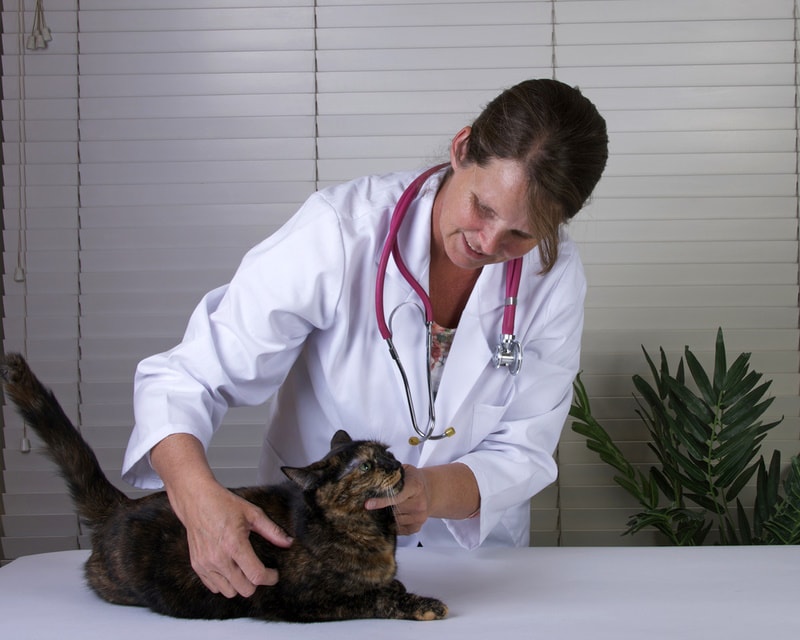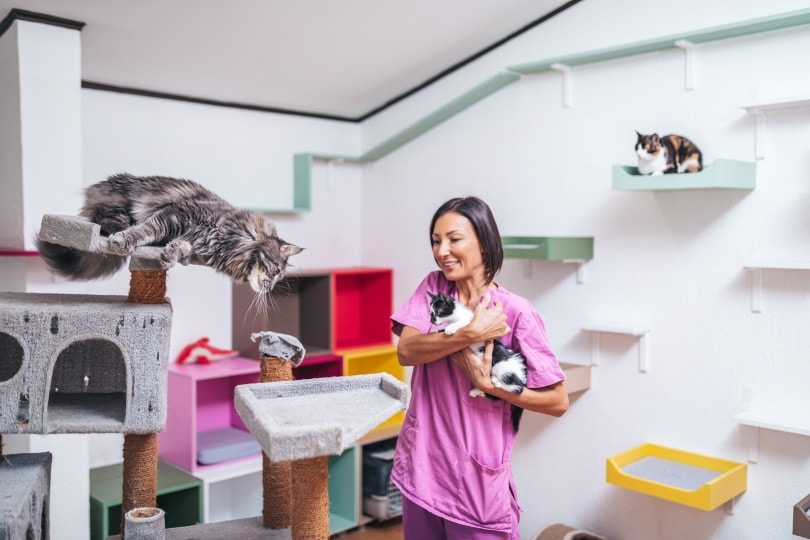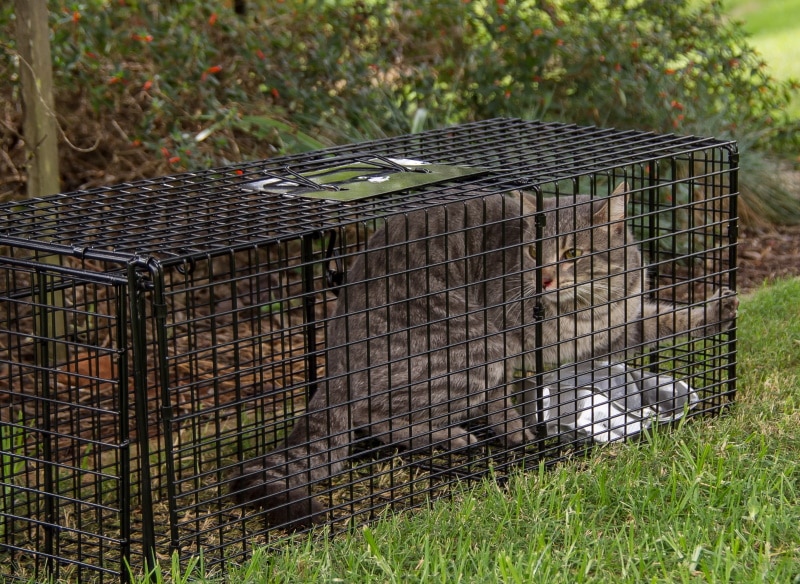How to Get a Feral Cat to the Vet: 10 Vet Approved Ideas
By Adam Mann
Updated on

It’s estimated that there are up to 70 million feral and outdoor cats in the United States alone,1 so there’s no shortage of cats that could use a trip to a vet. But if you’re thinking about trying to get a feral cat to the vet, there are a few tips and tricks to follow.
From ensuring you have everything you need to help catch them in the first place, we’ve highlighted 10 ideas you should be aware of when trying to get a feral cat to the vet without anybody getting hurt.
How to Get a Feral Cat to the Vet
1. Reach Out to Local Shelters
There are a few reasons you’ll want to reach out to local no-kill shelters before you start trapping feral cats to take them to the vet. First, many no-kill shelters will offer free trap, neuter, and release (TNR) programs.
These TNR programs don’t find homes for the cats, but they go a long way in keeping feral cat populations in check. If you’re participating in this program, they might even offer you free traps you can use.
Finally, these programs might be willing to take some of the cats you catch and treat and find homes for them. Local shelters should be your first point of contact before you start with any feral cat program.

2. Consider the Cost
If you’re thinking about taking feral cats to a traditional vet, you need to consider the cost before you take them. Some vets might have a program for feral cats, but most don’t. When you take a feral cat to the vet, they’ll need shots, lab work, and potentially more.
These costs generally start around $150, but they can go up much higher depending on what the vet finds. Reach out to the vet before taking the cat there to get an idea of what they charge but be ready just in case the bill goes higher for some reason.
3. Use a High-Quality Trap
When you’re trying to catch a feral cat to take them to the vet, you need to catch them first. Use a high-quality trap specifically for catching cats. Using the right trap is essential for a few different reasons.
Not only will it increase your likelihood of success, but using the wrong trap can even end up hurting the cat. The good news is that there are plenty of great cat traps out there, so reach out to your local shelter or vet if you need further information or recommendations.

4. Use the Right Bait
The right trap won’t do a thing if the cat doesn’t care about what’s inside it! Use a high-quality treat that they can’t resist to get them inside the trap.
Great bait options include catnip, chicken mackerel, sardines, baby food without onions or garlic, or tasty wet cat food. Ensure that the food you put inside the trap is safe for cats and that it stays fresh while it’s in there.
5. Cover the Trap
Cats are smart creatures, and if they recognize the trap, they’ll start to avoid it no matter what you put in there. Covering the trap can help hide it, making it feel more like a safe location for them to explore.
You can also camouflage the trap completely, but this requires more work and creativity compared to covering it.
6. Change the Trap’s Location
Once again, cats are smart creatures. Once they recognize the area each cat hits the trap, they’re less likely to visit that area again.
If you mix up the trap’s location and hide it again, they’re more likely to visit it. If you’re still having success with the trap in one location, you don’t want to move it, but when success starts to wane you’ll want to find a new location.

7. Watch the Feral Cats
You can’t catch the cats if you don’t know where they are! If you know where the feral cats frequently visit, you can put the traps in those locations. This makes it far more likely that the cats will visit the trap. A little bit of time sitting back and observing the behavior of the feral cats will go a long way in helping you catch them.
8. Hide the Trigger Plate
If your cat sees the trigger plate inside the trap, they might simply avoid it while they’re going to get the treat. Cats are extremely nimble and agile, so if they know to avoid it there’s only a slim chance they’ll slip up.
But if you cover the trigger plate, they won’t think anything of it when they step on it, allowing you to catch them with ease.
9. Guide Them to the Trap
If you can’t put the trap right next to their home, adding a small bait trail to the trap can help quite a bit. This makes a natural path for the cat to follow and will lead them right to the trap.
Just don’t overdo it with the food. You don’t want to fill up their bellies or attract larger animals to the trap.

10. Use Side-by-Side Traps
Feral cats generally live in packs, and by using a side-by-side trap you’re more likely to catch multiple feral cats at one time. Once you catch a feral cat, the other members of their pack will want to come to check them out and see what happened.
With a side-by-side trap, they’ll walk right into it and potentially set that trap off too. You need to have a plan for both, but it’s far quicker than catching one at a time.
Wrapping Up
There are simply too many feral cats out there, and while you won’t be able to care for them all, there are plenty of ways you can help a few. TNR programs are excellent and getting them a few shots can’t hurt either. Just be careful when working with them and have an accurate idea of how much everything is going to cost before you start trapping them!
Featured Image Credit: Sheila Fitzgerald, Shutterstock.












